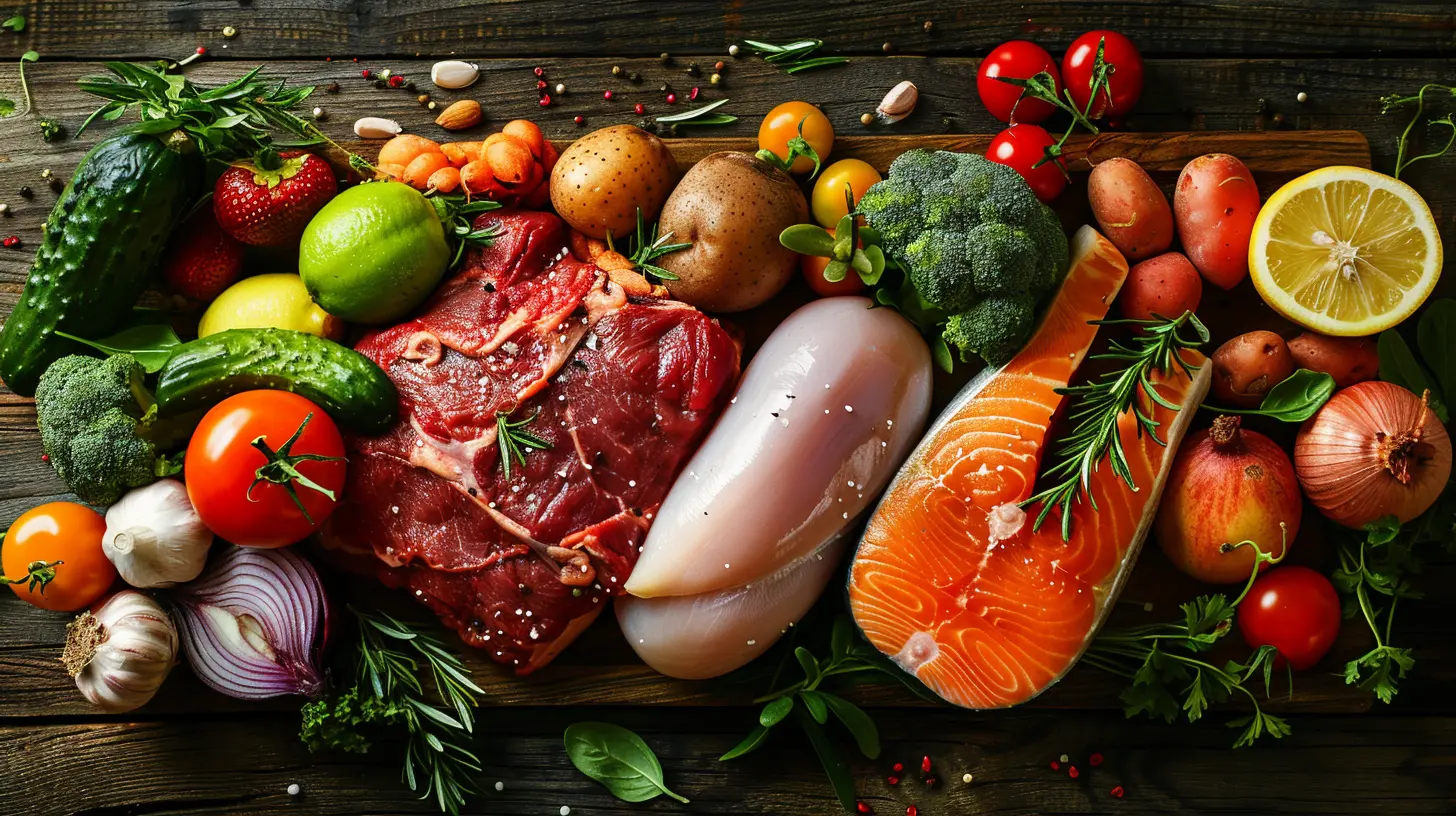Is the Paleo Diet Sustainable for Fitness Enthusiasts?
25 November 2025
The Paleo diet has been around for a hot minute, promising to take us back to our primal roots—where processed junk was nonexistent, and we thrived on whole foods. But the big question remains: Is the Paleo diet sustainable for fitness enthusiasts who push their bodies to the limit?
If you’re someone who lifts, runs, or engages in any kind of high-intensity workout, you need fuel. The Paleo diet might look great on paper, but can it actually support an active lifestyle in the long run? Let’s break it down.

What Is the Paleo Diet, Anyway?
Before we dive into whether it works for fitness buffs, let’s get the basics straight. The Paleo diet is inspired by what our ancestors supposedly ate—lean meats, fish, fruits, vegetables, nuts, and seeds. That means saying goodbye to dairy, grains, legumes, and anything processed.Proponents argue that our bodies aren’t designed to handle modern, processed foods, and by sticking to whole, nutrient-dense options, we can optimize health, energy, and performance. But does this ancestral eating style line up with modern fitness demands? 
The Good: Paleo Diet Benefits for Fitness Enthusiasts
Let’s start with the positives because, yes, there are some solid perks to eating Paleo—especially if you're an athlete or gym junkie.1. Protein-Packed for Muscle Growth
You know that post-workout protein shake you chug? Paleo-approved. With a focus on lean meats, fish, and eggs, this diet ensures you get plenty of protein for muscle recovery and growth. Plus, no shady additives—just pure, whole protein sources.2. Anti-Inflammatory Goodness
The Paleo diet is loaded with anti-inflammatory foods like leafy greens, fatty fish (hello, omega-3s!), and nuts. That means better recovery, reduced soreness, and an overall boost in performance. Who doesn’t want that?3. Improved Gut Health
Cutting out processed junk, dairy, and grains could do wonders for digestion. Many people report fewer bloating issues, better gut health, and improved nutrient absorption. And let’s be real—who wants to feel sluggish and bloated mid-workout?4. Stable Energy Levels
By ditching refined sugars and processed carbs, the Paleo diet promotes steady blood sugar levels—no crashing after a high-carb meal. This could mean better endurance and more consistent performance during workouts.
The Not-So-Great: Challenges of Paleo for Athletes
Now, it’s time for some real talk. While Paleo has its upsides, it also has some serious limitations—especially if you’re an athlete pushing your limits.1. Carb Deficiency & Performance Drops
Let’s be honest—carbs are king when it comes to fueling workouts. The Paleo diet eliminates grains and legumes, which are prime sources of complex carbs.Without enough carbs, you might hit that dreaded wall mid-workout. Your body primarily runs on glycogen (stored carbs) for intense exercise, and if you're cutting them too much, performance could suffer.
2. Limited Nutrient Variety
Say goodbye to dairy and legumes—two food groups packed with essential nutrients like calcium, magnesium, and fiber. Without these, you might end up with deficiencies, affecting bone health, digestion, and muscle function.3. Hard to Maintain for High-Calorie Needs
If you train hard, you need calories—lots of them. And let’s be real, getting enough food on Paleo can be a challenge. You can't just grab a sandwich or have a bowl of oatmeal. Preparing Paleo meals takes time, and if you’re not careful, you could end up in an energy deficit.4. Social & Practical Challenges
We love a good ancestral diet until it becomes a full-time job to plan your meals. Eating out? Tricky. Grabbing a quick snack? Limited options. The Paleo lifestyle demands discipline, and if you're a social butterfly or constantly on the move, it can become a major hassle.
Tweaking Paleo for Maximum Fitness Gains
So, does that mean Paleo is completely off the table for fitness enthusiasts? Not necessarily. With a few smart modifications, you can make it work without sacrificing performance.1. Incorporate More Paleo-Friendly Carbs
Instead of cutting carbs altogether, focus on Paleo-approved carb sources like:- Sweet potatoes
- Bananas
- Beets
- Pumpkin
- Berries
These will help replenish glycogen stores so you aren’t running on fumes during workouts.
2. Time Your Meals Strategically
If you’re training hard, make sure you're eating properly around workouts. A high-carb meal (sweet potatoes + lean protein) before and after training can do wonders for performance and recovery.3. Consider Adding Some Non-Paleo Foods
Some athletes follow a "modified Paleo" approach, allowing certain foods like white rice or fermented dairy for extra nutrients. Strict Paleo might not cut it for your needs—so don’t be afraid to adapt if it helps you perform better.4. Prioritize Healthy Fats
Since carbs are limited, healthy fats should take center stage for energy. Think avocados, nuts, seeds, coconut oil, and fatty fish. These will help keep your energy levels stable and prevent crashes.So, Is the Paleo Diet Sustainable for Fitness Enthusiasts?
It depends. If you're a casual gym-goer or focusing on general health, Paleo can work great. However, for high-intensity athletes, it might need some adjustments. The lack of grains and legumes can make it challenging to get enough carbs and essential nutrients for peak performance.But here’s the deal—nutrition isn’t "one size fits all." Some athletes thrive on Paleo, while others struggle. The key is to listen to your body. If you’re constantly tired, sluggish, or seeing performance dips, it might be time to reconsider.
Final Verdict: Paleo can be sustainable, but only with tweaks to ensure you're fueling properly. Don’t be afraid to bend the rules if it means better performance.
The Bottom Line
The Paleo diet has its perks—clean eating, anti-inflammatory benefits, and solid protein intake—but it’s not without its challenges. If you’re a fitness enthusiast, you’ll need to be strategic to ensure you’re getting enough energy and nutrients to fuel your workouts.At the end of the day, it’s all about balance. Want to eat like a caveman while still crushing your workouts? Then tweak the diet to fit your needs. Because let’s be real—fitness is about performance, not just aesthetics.
all images in this post were generated using AI tools
Category:
Paleo DietAuthor:

Arthur McKeever

